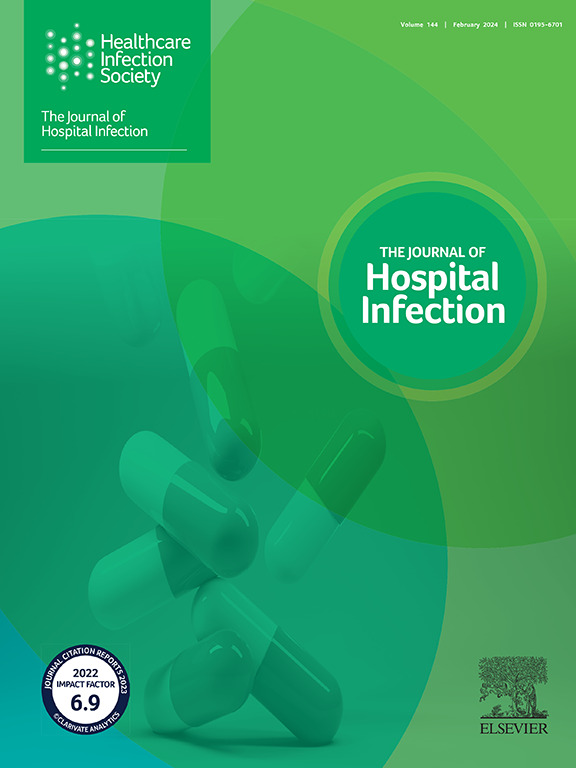以两国研讨会为基础,将行为改变理论框架应用于可持续感染预防和控制。
IF 3.1
3区 医学
Q1 INFECTIOUS DISEASES
引用次数: 0
摘要
背景:通过减少可避免的感染和随后的干预措施,感染预防和控制(IPC)具有内在的可持续性。目的:本文的目的是在一个研讨会的基础上,结合两国多学科专家小组的观点,探讨克服成功实施更可持续的生态可持续性IPC所需的关键障碍的能力、机会和动机。方法:研讨会的16名参与者被分成小组,讨论了三个不同的问题,这些问题与世界咖啡法有关。通过内容分析,我们将结果分为共同的主题——首先针对每个问题,然后是整体——并将这些类别映射到能力、机会、动机和行为(COM-B)模型中。研究结果:我们在COM-B框架的两种行为来源中确定了五种干预功能,其中16种分类干预措施中的10种可以由IPC从业者直接启动,而其他干预措施需要由医院管理部门领导。一个反复出现的主题是需要一个结构良好、高质量的数据库,在任何干预措施的源头上权衡患者的安全性和可持续性。结论:虽然自上而下的方法在一定程度上是必不可少的,但IPC从业者也可以直接发起和领导各种干预措施。此外,为了确保实践中可持续和持久的变化,需要进行结构化和全面的数据收集。这些结果为希望变得更加环保的医疗机构和IPC从业者提供了有价值的信息。本文章由计算机程序翻译,如有差异,请以英文原文为准。
Applying the theoretical framework of behavioural change to sustainable infection prevention and control based on a binational workshop
Background
Infection prevention and control (IPC) is inherently sustainable by reducing avoidable infections and subsequent interventions.
Aim
To encompass the perspectives of a binational multi-disciplinary group of experts based on a workshop on the capabilities, opportunities and motivations needed to overcome key barriers to the successful implementation of even more sustainable IPC with regard to ecological sustainability.
Methods
The 16 workshop participants were divided into groups to discuss three different issues regarding the most sustainable IPC following the World Café method. Carrying out a content analysis, the results were categorized into common themes – first for each question and then overall – and those categories were mapped into the Capability, Opportunity, Motivation and Behaviour (COM-B) model.
Findings
Five intervention functions were identified across two sources of behaviour of the COM-B framework, whereby 10 of the 16 categorized interventions could be initiated directly by the IPC practitioners, whilst others need to be led by the hospital management. A recurring theme was the need for a well-structured, high-quality database that weighs patient safety and sustainability at the source of any intervention.
Conclusion
While a top-down approach is essential in parts, various interventions can also be initiated and led directly by IPC practitioners. In addition, to ensure sustainable and lasting changes in practice, there needs to be structured and comprehensive data collection. These results add valuable information for healthcare facilities and IPC practitioners who want to become more environmentally-friendly.
求助全文
通过发布文献求助,成功后即可免费获取论文全文。
去求助
来源期刊

Journal of Hospital Infection
医学-传染病学
CiteScore
12.70
自引率
5.80%
发文量
271
审稿时长
19 days
期刊介绍:
The Journal of Hospital Infection is the editorially independent scientific publication of the Healthcare Infection Society. The aim of the Journal is to publish high quality research and information relating to infection prevention and control that is relevant to an international audience.
The Journal welcomes submissions that relate to all aspects of infection prevention and control in healthcare settings. This includes submissions that:
provide new insight into the epidemiology, surveillance, or prevention and control of healthcare-associated infections and antimicrobial resistance in healthcare settings;
provide new insight into cleaning, disinfection and decontamination;
provide new insight into the design of healthcare premises;
describe novel aspects of outbreaks of infection;
throw light on techniques for effective antimicrobial stewardship;
describe novel techniques (laboratory-based or point of care) for the detection of infection or antimicrobial resistance in the healthcare setting, particularly if these can be used to facilitate infection prevention and control;
improve understanding of the motivations of safe healthcare behaviour, or describe techniques for achieving behavioural and cultural change;
improve understanding of the use of IT systems in infection surveillance and prevention and control.
 求助内容:
求助内容: 应助结果提醒方式:
应助结果提醒方式:


